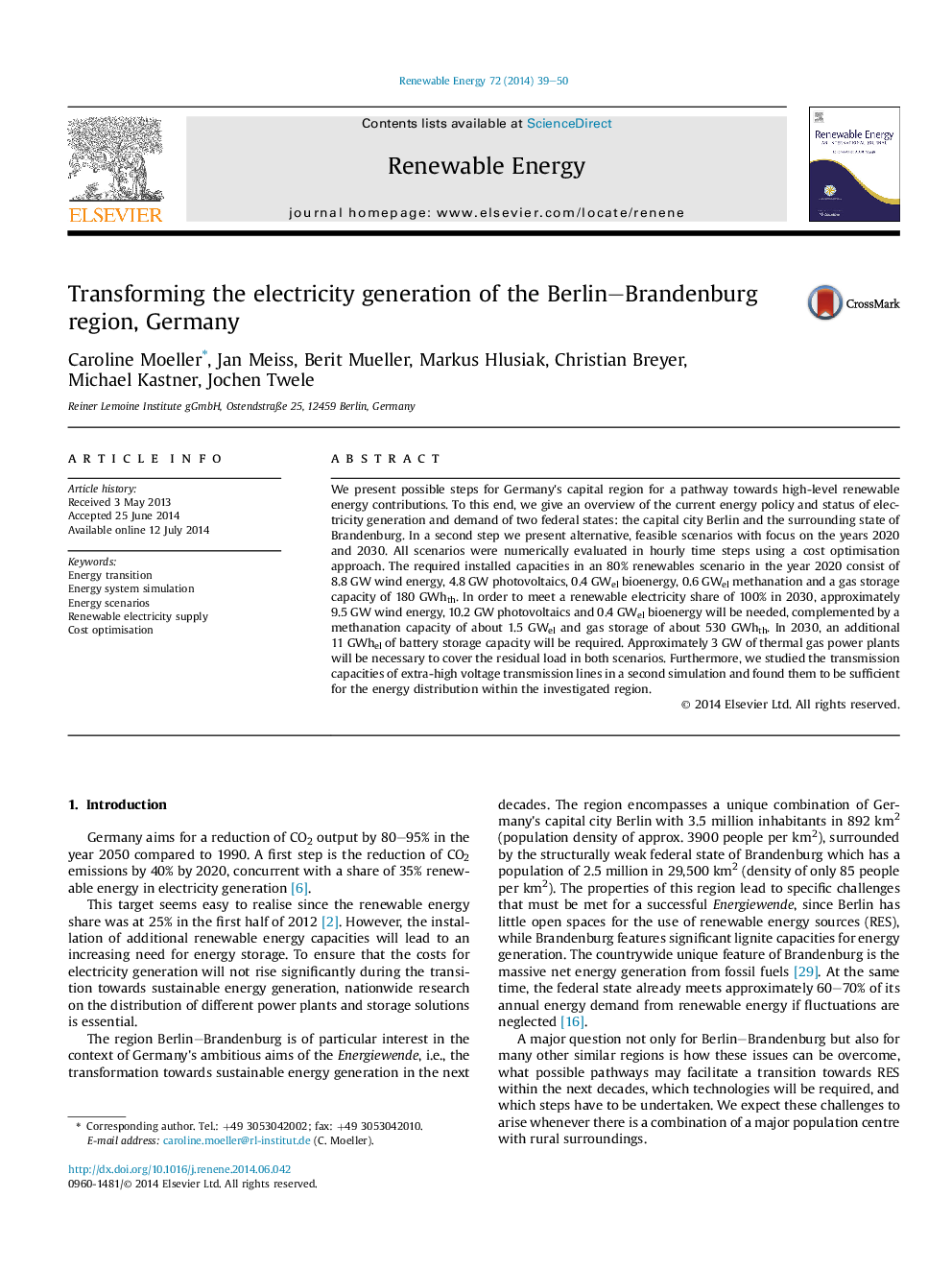| Article ID | Journal | Published Year | Pages | File Type |
|---|---|---|---|---|
| 6767860 | Renewable Energy | 2014 | 12 Pages |
Abstract
We present possible steps for Germany's capital region for a pathway towards high-level renewable energy contributions. To this end, we give an overview of the current energy policy and status of electricity generation and demand of two federal states: the capital city Berlin and the surrounding state of Brandenburg. In a second step we present alternative, feasible scenarios with focus on the years 2020 and 2030. All scenarios were numerically evaluated in hourly time steps using a cost optimisation approach. The required installed capacities in an 80% renewables scenario in the year 2020 consist of 8.8Â GW wind energy, 4.8Â GW photovoltaics, 0.4Â GWel bioenergy, 0.6Â GWel methanation and a gas storage capacity of 180Â GWhth. In order to meet a renewable electricity share of 100% in 2030, approximately 9.5Â GW wind energy, 10.2Â GW photovoltaics and 0.4Â GWel bioenergy will be needed, complemented by a methanation capacity of about 1.5Â GWel and gas storage of about 530Â GWhth. In 2030, an additional 11Â GWhel of battery storage capacity will be required. Approximately 3Â GW of thermal gas power plants will be necessary to cover the residual load in both scenarios. Furthermore, we studied the transmission capacities of extra-high voltage transmission lines in a second simulation and found them to be sufficient for the energy distribution within the investigated region.
Related Topics
Physical Sciences and Engineering
Energy
Renewable Energy, Sustainability and the Environment
Authors
Caroline Moeller, Jan Meiss, Berit Mueller, Markus Hlusiak, Christian Breyer, Michael Kastner, Jochen Twele,
